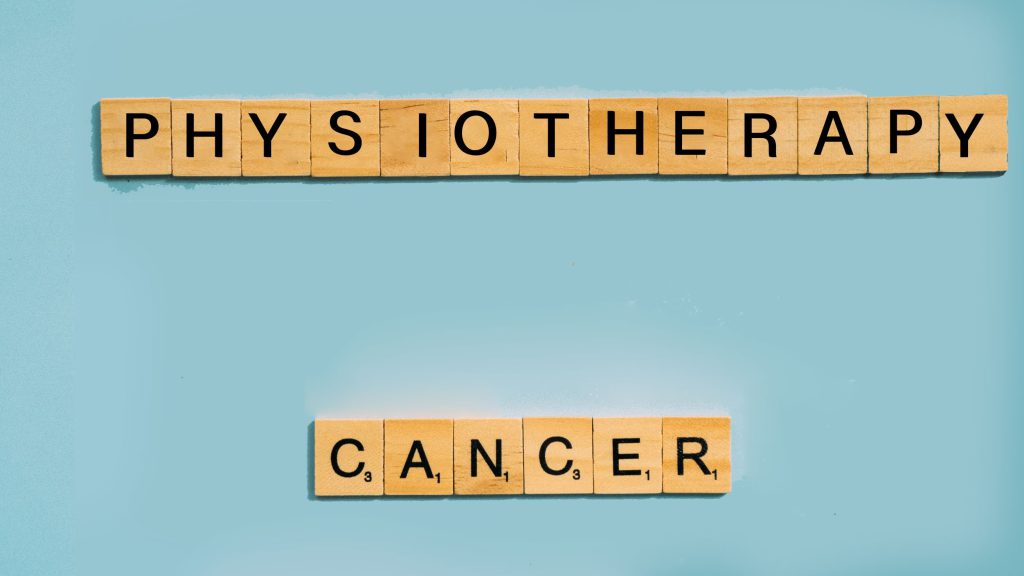Comprehensive Guide to Physiotherapy for Cancer Patients
Table of Contents
- Introduction
- The Role of Physiotherapy in Cancer Treatment
- When to Begin Physiotherapy
- Situations Addressed by Physiotherapy
- What to Expect from a Physiotherapy Program
- FAQs about Physiotherapy and Cancer
- Conclusion
– Introduction
Cancer is a formidable adversary that affects millions of lives across the globe. The journey of cancer diagnosis and treatment is often grueling, both physically and mentally. In the quest for improved quality of life and holistic care, the role of physiotherapy in cancer treatment cannot be understated. This article will delve into when to commence physiotherapy, the situations it can address, and what patients can anticipate from a physiotherapy program.
– The Role of Physiotherapy in Cancer Treatment
Physiotherapy, also known as physical therapy, is a specialized branch of healthcare that focuses on restoring and maintaining physical function. When integrated into cancer care, physiotherapy aims to alleviate pain, improve mobility, and enhance the overall well-being of cancer patients. The key objectives of physiotherapy in cancer treatment include:
- Pain Management: Physiotherapy helps manage pain through various techniques such as manual therapy, exercises, and modalities like heat and cold therapy.
- Improving Mobility: Cancer and its treatments can lead to decreased mobility. Physiotherapists work to regain and enhance mobility through exercises and stretches.
- Fatigue Management: Cancer patients often experience extreme fatigue. Physiotherapy provides strategies to combat fatigue and enhance energy levels.
- Enhancing Quality of Life: The holistic approach of physiotherapy contributes to an improved quality of life by addressing physical, emotional, and functional aspects.
– When to Begin Physiotherapy
a. Pre-Treatment Phase
In many cases, it’s advisable to initiate physiotherapy before the cancer treatment begins. This pre-treatment phase focuses on preparing the patient physically for the upcoming therapies, surgeries, or interventions. The goals during this phase include:
- Strengthening: Building physical strength to help patients better cope with the forthcoming treatments.
- Pain Management: Preemptive pain management to alleviate symptoms associated with cancer.
b. During Treatment
Physiotherapy can also be conducted simultaneously with cancer treatment. This stage primarily concentrates on minimizing the side effects of treatment, such as:
- Lymphedema Management: Reducing swelling and discomfort, often observed in breast cancer patients.
- Improving Breathing: Addressing respiratory issues that may arise due to certain cancer treatments.
– Situations Addressed by Physiotherapy
a. Surgery Rehabilitation
After cancer surgery, physiotherapy plays a pivotal role in rehabilitation. Patients may experience post-operative complications such as reduced mobility, scarring, and muscle weakness. Physiotherapists design tailored programs to aid in post-surgery recovery.
b. Pain and Fatigue Management
Cancer patients frequently grapple with pain and fatigue. Physiotherapy offers effective strategies to alleviate these symptoms and enhance comfort and energy levels.
c. Lymphedema
Lymphedema, often a result of cancer treatment, involves the swelling of limbs. Physiotherapy techniques like manual lymphatic drainage and compression garments can help manage this condition.
d. Breathlessness
Certain cancer treatments can lead to breathlessness. Physiotherapists provide breathing exercises and techniques to improve lung function and alleviate discomfort.
– What to Expect from a Physiotherapy Program
Patients undergoing physiotherapy as part of their cancer treatment should have a clear understanding of what to expect:
- Assessment: The journey typically commences with an assessment of the patient’s physical condition. This assessment helps the physiotherapist create a customized program.
- Tailored Exercises: The physiotherapist designs exercises and activities specifically catered to the patient’s needs and physical condition.
- Regular Monitoring: Patients can expect continuous monitoring and adjustments to their program as they progress.
- Pain Relief: Techniques to manage and reduce pain are an integral part of the program.
- Education: Patients receive guidance and education on managing symptoms and improving their quality of life.
- Emotional Support: Beyond the physical aspect, physiotherapists also offer emotional support, understanding the emotional toll of cancer.
The Role of Physiotherapy in Cancer Treatment: Pain Management
Cancer is a relentless adversary, taking a toll on the body and mind of those affected. Pain is a common and debilitating symptom of cancer, and it often accompanies the disease from the moment of diagnosis. Managing cancer-related pain is a paramount concern for both patients and their healthcare providers. In this comprehensive guide, we’ll explore the pivotal role of physiotherapy in cancer treatment, specifically focusing on pain management.
Understanding Cancer-Related Pain
Cancer pain can be caused by various factors, including the tumor itself, its treatment, or related conditions. Understanding the source and characteristics of the pain is crucial for effective management.
- Tumor-Related Pain: Pain originating from the tumor itself can be due to pressure on surrounding tissues, inflammation, or the release of pain-inducing chemicals.
- Treatment-Related Pain: Many cancer treatments, such as chemotherapy, radiation therapy, and surgery, can lead to acute and chronic pain as side effects.
- Muscle and Joint Pain: Cancer can cause muscle and joint pain due to its impact on the musculoskeletal system.
- Neuropathic Pain: Nerve damage caused by cancer or its treatments can result in neuropathic pain, characterized by burning, tingling, or shooting sensations.
The Multifaceted Approach of Physiotherapy
Physiotherapy, as a holistic healthcare approach, offers a multifaceted strategy to manage cancer-related pain. Physiotherapists, with their specialized training, work in collaboration with oncologists to address the unique pain challenges faced by cancer patients.
1. Assessment of Pain
Before embarking on any pain management program, physiotherapists conduct a thorough assessment to determine the source, intensity, and characteristics of the pain. This assessment serves as the foundation for creating a personalized treatment plan.
2. Physical Modalities
Physiotherapists employ various physical modalities to alleviate pain:
- Heat and Cold Therapy: The application of heat or cold to painful areas can provide relief and reduce inflammation.
- Electrotherapy: Techniques such as TENS (Transcutaneous Electrical Nerve Stimulation) use low-voltage electrical currents to relieve pain.
3. Manual Therapy
Physiotherapists use hands-on techniques to manipulate soft tissues and joints, which can help reduce pain and improve mobility.
4. Exercise Programs
Exercise is a key component of physiotherapy for cancer pain management. Tailored exercise programs can help strengthen muscles, improve flexibility, and reduce pain.
5. Breathing Techniques
Cancer and its treatments can lead to breathlessness and chest pain. Physiotherapists teach breathing exercises to improve lung function and ease discomfort.
6. Patient Education
Beyond the physical aspect, physiotherapists educate patients on pain management strategies they can implement in their daily lives. This empowers patients to take an active role in their pain management.
Benefits of Physiotherapy in Pain Management
The integration of physiotherapy into cancer treatment offers several notable benefits in managing pain:
- Non-Invasive: Physiotherapy is a non-invasive approach to pain management, reducing the need for additional medications or procedures.
- Personalized: Treatment plans are tailored to each patient’s unique needs, ensuring that pain management is effective and safe.
- Enhanced Mobility: Improved mobility and function lead to a better quality of life, reducing pain and discomfort.
- Minimized Medication: With effective pain management through physiotherapy, patients may require fewer pain medications, mitigating their potential side effects.
- Comprehensive Approach: Physiotherapy addresses not only the physical but also the emotional aspects of pain, promoting overall well-being.
Challenges in Pain Management Through Physiotherapy
While physiotherapy is highly beneficial in cancer pain management, it’s essential to acknowledge potential challenges:
- Individual Variability: Cancer and its treatment affect individuals differently. Physiotherapy programs must be customized to address each patient’s unique pain profile.
- Consistency: Patients need to adhere to their physiotherapy regimen to experience long-term pain relief. Compliance can be challenging due to the fatigue and side effects of cancer treatment.
- Interdisciplinary Collaboration: Effective pain management often requires collaboration between physiotherapists and oncologists. Communication and teamwork are vital.
The Patient’s Role in Pain Management
Patients themselves play a significant role in managing cancer-related pain. Here are some steps patients can take:
- Open Communication: Honest and open communication with the healthcare team is crucial. Patients should discuss their pain levels, concerns, and preferences.
- Adherence to Treatment: Complying with physiotherapy exercises and recommendations is vital. Patients should inform their physiotherapists if they experience any challenges.
- Self-Care: Beyond physiotherapy sessions, patients can engage in self-care techniques like mindfulness, relaxation, and breathing exercises.
Summary
Pain management is a critical aspect of cancer care, and physiotherapy plays an invaluable role in this endeavor. With a personalized, comprehensive, and patient-centered approach, physiotherapists help cancer patients alleviate pain, regain mobility, and improve their overall quality of life.
– FAQs about Physiotherapy and Cancer
Q1: Is physiotherapy safe for all cancer patients?
A1: Physiotherapy can be safe and beneficial for most cancer patients. However, it’s essential to consult with an oncologist and a qualified physiotherapist to determine the suitability of treatment based on the individual’s condition.
Q2: Can physiotherapy help with cancer-related fatigue?
A2: Yes, physiotherapy can help manage cancer-related fatigue through tailored exercise programs aimed at improving energy levels.
Q3: How long does a physiotherapy program typically last?
A3: The duration of a physiotherapy program varies depending on the patient’s needs and treatment goals. It can range from a few weeks to several months.
– Conclusion
In the complex journey of cancer treatment, physiotherapy emerges as a beacon of hope, offering relief from pain, improved mobility, and an overall enhanced quality of life. The optimal timing to begin physiotherapy varies, but it’s clear that it can play a vital role both pre- and post-cancer treatment. Addressing a range of situations, from surgery rehabilitation to pain management, and offering personalized care, physiotherapy is an essential component of comprehensive cancer care.
If you’re a cancer patient or a caregiver, don’t hesitate to explore the benefits of physiotherapy in your journey towards recovery. To learn more about how physiotherapy can help in your specific situation, or if you have any questions, please feel free to reach out. Together, we can make your cancer journey more manageable and comfortable.



